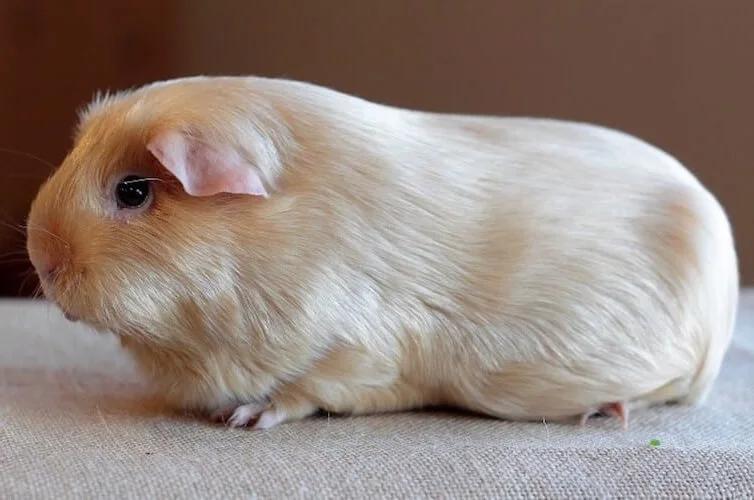The Satin Guinea Pig is a unique and captivating breed known for its glossy and luxurious coat. As a beloved pet, they are not only a visual treat but also a source of affection and companionship for their owners.
Origins and Distinctive Features
The Satin Guinea Pig stands out with its distinctive shiny coat, which is the result of a unique hair structure that reflects light, giving it a polished appearance. This breed is appreciated for its elegant look and gentle nature.
To learn more about other guinea pig breeds visit A Guide to Guinea Pig Breeds: Finding Your Perfect Match.
Physical Characteristics
- Size: Satin Guinea Pigs are generally small to medium-sized.
- Coat Type: Their most distinctive feature is their shiny, satin-like coat which requires regular grooming.
- Color Variations: They come in various colors and patterns, each adding to their unique charm.
Temperament
Satin Guinea Pigs are known for their calm and pleasant demeanor, making them not just a delight to look at but also a joy to interact with. They are social animals and thrive in pairs or small groups.
Pros and Cons
Pros:
- Their glossy coat is a visual delight.
- They are gentle and suitable for families.
- Known for their sociable nature, they bond well with their owners.
Cons:
- Require regular grooming to maintain their coat’s sheen.
- Need a well-balanced diet to prevent health issues.
- Can be sensitive to extreme temperatures.
Lifespan
With proper care, Satin Guinea Pigs have an average lifespan of around 5-7 years.
Care Requirements
- Grooming: Regular brushing is required to maintain their coat’s luxurious sheen and to prevent matting. Baths should be infrequent to preserve the natural oils in their skin.
- Diet: A high-fiber diet is essential. This includes high-quality hay, fresh vegetables, and fruits, as well as specially formulated guinea pig pellets. Avoid foods high in sugar or fat and those that are toxic, like chocolate, avocado, or onion.
- Exercise Requirement: Provide a spacious cage and a safe play area for exercise and exploration. Satin Guinea Pigs also need mental stimulation, which can be provided through toys and interactive play.
- Housing: The cage should be spacious, with a minimum of 7.5 square feet for one guinea pig, increasing size for additional guinea pigs. Use absorbent, dust-free bedding, and avoid cedar or pine shavings. Maintain a consistent, comfortable temperature, and keep the cage away from direct sunlight and drafts.
- Health Considerations: Watch for signs of common health issues like dental problems or respiratory infections. Provide chew toys and ensure regular veterinary check-ups.
Where to Get One
- Rescue Centers: Adoption from rescue centers is encouraged, offering a loving home to a guinea pig in need.
- Reputable Breeders: Ensure breeders are ethical and provide a healthy environment for the guinea pigs.
Interesting Fact
Satin Guinea Pigs are not just cherished for their appearance but also for their ability to form strong, affectionate bonds with their owners, making them a cherished members of the family.

